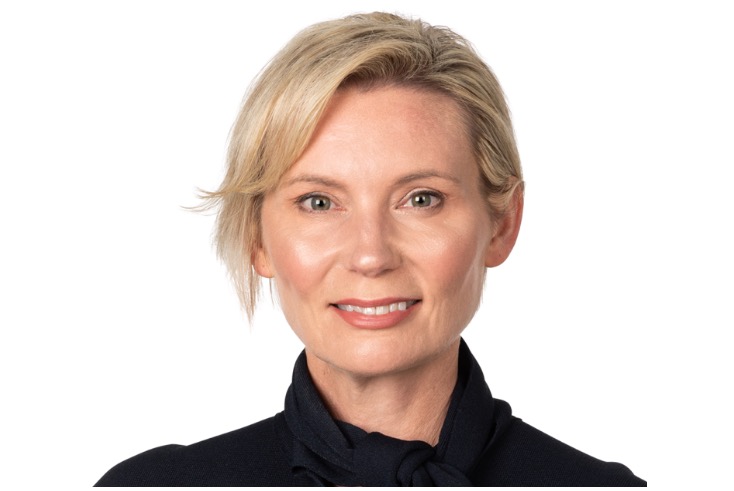Attention Revolution: a new column by Professor Karen Nelson-Field

Globally renowned media science researcher and founder of Amplified Intelligence Prof Karen Nelson-Field introduces her new column and why she wants to set a True North for the digital media industry
Welcome to Attention Revolution, my new monthly column for Mediatel News, where I’ll be exploring different ways in which brands can activate attention as a meaningful way of measuring online advertising.
As well as being a source of insight and inspiration, I’d like to set a True North for how the media industry should build a better online ecosystem. If you’d like to ask me a question about anything I’ve written, or about why measuring attention is so important in advertising and media, please email me at [email protected] and I’ll attempt to answer it in subsequent articles.
Responsible disruption
I think by now, most of you know that the advertising ecosystem is broken.
It’s broken because our trading currency relies on impression data being an accurate measure of what a human actually sees, but this is far from reality. And worse, without relativity across platforms (meaning what a human sees differs between platforms), there are large gaps in the relationship between dollars per impression and effectiveness per impression.
Yet brand growth hinges on advertising being seen. Think of it this way, if you are overspending on low attention media platforms and underspending on high attention media platforms while your competitors are doing the exact opposite, your brand will not grow. Or worse, will more likely decline.
Knowing this, an attention revolution has begun, where actual human attention is fittingly looked upon as the North Star to ad effectiveness. And this revolution is ignited by those in the measurement industry who are actively looking for supplementary metrics to monetise. As well as agencies and brands who are desperate to finally bring some level of transparency back to a job they are seemingly doing blind.
The result of this revolution is major change in the economy of our ecosystem, one that revolves around the monetisation of attention – the Attention Economy.
But beware, we have been here before.
Cast your minds back to the mid-noughties when disruption and blitzscaling created (accidental) media companies who were the perfect combination of unconventional thinkers, risk takers, venture capital and commercial genius. Instant measurement appeared in an instant which sounded at the time like the exciting thing we all needed.
Today, the industry is well aware of the negative flow-on effects of clickbait-style engagement metrics that made attribution promises they couldn’t keep. And worse, advertisers and brands have been devalued by the diminishing attention consumers pay to degraded content.
So, as we enter a new era of measurement, what have we learned from the last effort?
- Our obsession with and willingness to pay for instant measurement should be replaced by an obsession and willingness to pay for quality content (that attracts attention);
- Measurement companies, not marketing companies, should be looked upon to offer solutions;
- Mark my words: within six to 12 months the industry will be flooded with vendors selling attention metrics. Some will be good, many will not;
- Disruption is great, but only when the disruption can be validated against brand growth.
I, and my team at Amplified Intelligence, believe that media trading should be fair and accountable. We believe that we owe it to the industry not to just jump in blind with a quick cure to fix what’s broken. Our job is to build a solid solution and, as it turns out, build a new measurement category.
Building a solid solution is not a single, simple trajectory. It requires research, application and thought leadership – all at the same time. It requires replication and rigour so that the solution doesn’t evaporate as soon as the industry throws a new challenge at it. It needs a continuous loop of research, product development, shared insight and feedback. And again. And again.
A new measurement category needs ethical leaders to guide the developing conversation. It needs a clear and obvious way to sort the burgeoning new quick-fix attention measures from the rigorous attention measures. It turns out that the best measure for real human attention to advertising is, wait for it, real human attention to advertising. My quick tip is that if a vendor hasn’t actually used human gaze, then beware!
At every twist and turn, our attention research continues to show me that it is possible to approach the measurement problem, dare I say it ethically, and offer more certainty than the industry has seen for a long time. But we need to be careful not to make the same mistakes. Attention can just easily be used to drive to the cheapest, darkest corners of the internet. It’s important to understand attention metrics in order to use them to drive quality.
Welcome to the Attention Revolution, where I’ll be parking opinion at the door and sharing useful attention insights that move us all towards a positive attention economy. As an industry we have a second chance and a duty of care to work fast, but with validated application.
After all, we need to move fast but we don’t want to break things!
If you’d like to respond to this article or ask Prof Nelson-Field a question, please email: [email protected]. Please note this email is monitored by the Mediatel News editorial team.




